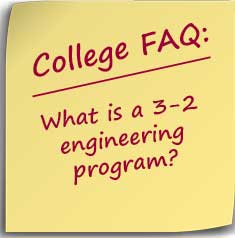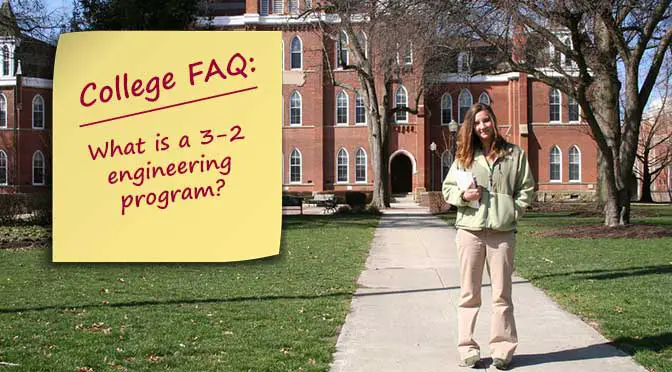 A 3-2 program commonly refers to a dual degree program in Engineering and Liberal Arts that is completed by attending two different institutions. Students spend their first three years attending a college without an engineering program, usually a Liberal Arts College. The last two years are completed at an institution with an engineering program and the student graduates with two bachelors degrees.
A 3-2 program commonly refers to a dual degree program in Engineering and Liberal Arts that is completed by attending two different institutions. Students spend their first three years attending a college without an engineering program, usually a Liberal Arts College. The last two years are completed at an institution with an engineering program and the student graduates with two bachelors degrees.
Students in 3-2 programs must complete specific required courses in order to be able to complete the engineering degree on time. They generally include chemistry, mathematics, physics and any non-science or mathematical distribution requirements.
The Liberal Arts programs will generally be formally affiliated with a selection of engineering programs that will automatically admit students who fulfill all prerequisites, have the required GPA, and are recommended the school liaison. However, some do not guarantee admissions and require a separate application.
The participating schools, either the Liberal Arts College or the Engineering Program, will list affiliated programs. Columbia University and Washington University in St. Louis are two examples of the participating engineering programs. You can find a list of additional programs at 3-2 Engineering.
3-2 Engineering Program Pros and Cons
The advantage of the 3-2 program is that students can spend their first three years at a smaller Liberal Arts College and build a solid foundation in the math sciences. They will also have the chance to experience a different school and environment.
The disadvantage is that students will not graduate with their senior class. They will also have to “start over” at the engineering institution. Also, many engineering programs are offering engineering classes to incoming freshman to help student maintain their interest in engineering.
For more information:

